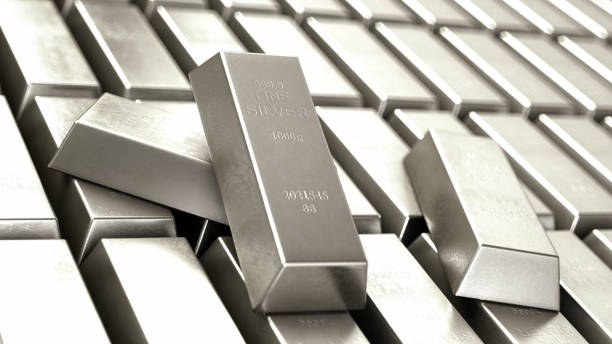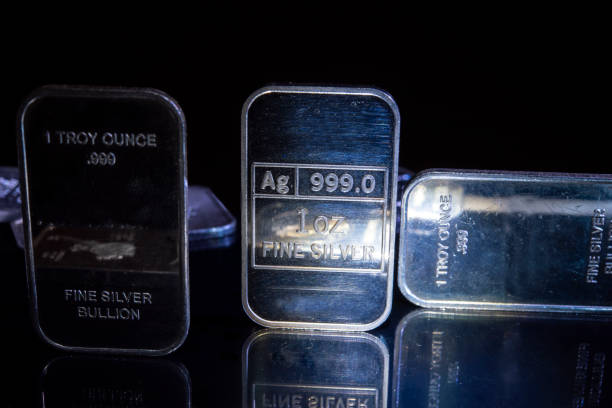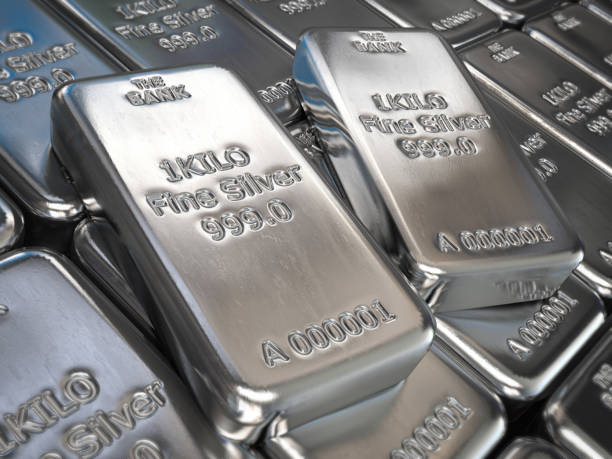Silver Price Forecast: XAG/USD rockets over 4% as bulls target $30.00
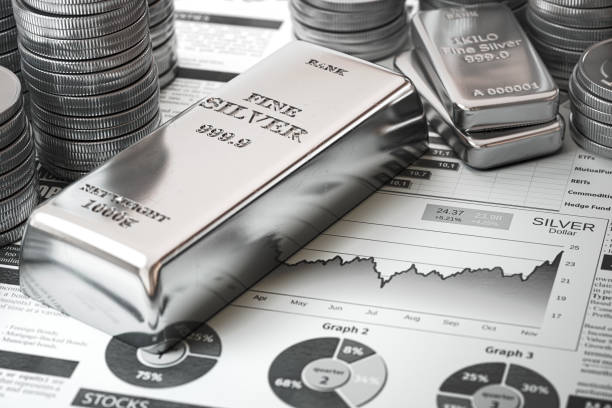
- Silver breaks above the 50-DMA at $28.99 and 100-DMA at $29.20, supported by a bullish ‘double bottom’ formation.
- RSI signals strong momentum, with first resistance at $30.00, followed by targets at $30.18 and $30.84.
- A drop below $29.00 could signal a bearish shift, with key support at this level.
Silver's price rallied sharply on Thursday and gained over 4.30% during the day, trading at $29.90 after bouncing off daily lows of $28.54. The grey metal climbed due to overall US Dollar weakness, even though inflation slightly increased. Nevertheless, a bad jobs report sponsored Silver’s leg up.
XAG/USD Price Forecast: Technical outlook
From a technical standpoint, a ‘double bottom’ formation sponsored the non-yielding advance, clearing on its way north, key resistance at the 50-day moving average (DMA) at 28.99, and the 100-DMA at 29.20.
Momentum is bullish, as portrayed by the Relative Strength Index (RSI). Hence, XAG/USD’s path of least resistance is tilted to the upside.
Silver’s first resistance would be $30.00. A breach of the latter will expose the August 26 high at 30.18, followed by the Jun 21 peak at $30.84. If surpassed the next stop would be the July 11 high at $31.75.
If bears would like a bearish resumption, they need to drive prices below the $29.00 figure.
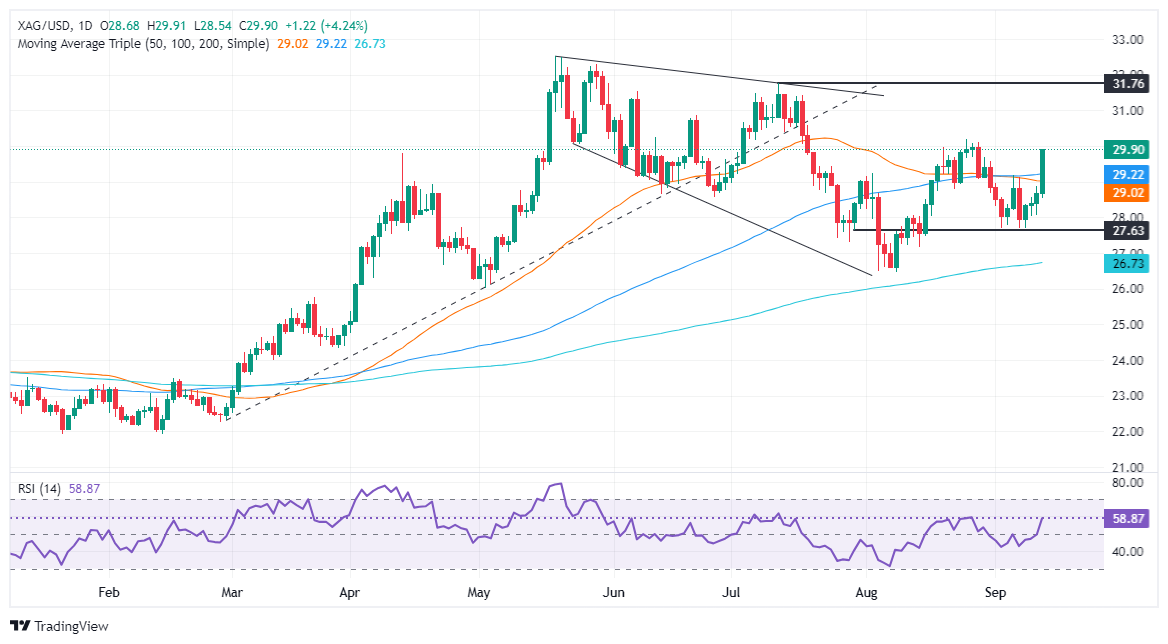
XAG/USD Price Action – Daily Chart
Silver FAQs
Why do people invest in Silver?
Silver is a precious metal highly traded among investors. It has been historically used as a store of value and a medium of exchange. Although less popular than Gold, traders may turn to Silver to diversify their investment portfolio, for its intrinsic value or as a potential hedge during high-inflation periods. Investors can buy physical Silver, in coins or in bars, or trade it through vehicles such as Exchange Traded Funds, which track its price on international markets.
Which factors influence Silver prices?
Silver prices can move due to a wide range of factors. Geopolitical instability or fears of a deep recession can make Silver price escalate due to its safe-haven status, although to a lesser extent than Gold's. As a yieldless asset, Silver tends to rise with lower interest rates. Its moves also depend on how the US Dollar (USD) behaves as the asset is priced in dollars (XAG/USD). A strong Dollar tends to keep the price of Silver at bay, whereas a weaker Dollar is likely to propel prices up. Other factors such as investment demand, mining supply – Silver is much more abundant than Gold – and recycling rates can also affect prices.
How does industrial demand affect Silver prices?
Silver is widely used in industry, particularly in sectors such as electronics or solar energy, as it has one of the highest electric conductivity of all metals – more than Copper and Gold. A surge in demand can increase prices, while a decline tends to lower them. Dynamics in the US, Chinese and Indian economies can also contribute to price swings: for the US and particularly China, their big industrial sectors use Silver in various processes; in India, consumers’ demand for the precious metal for jewellery also plays a key role in setting prices.
How do Silver prices react to Gold’s moves?
Silver prices tend to follow Gold's moves. When Gold prices rise, Silver typically follows suit, as their status as safe-haven assets is similar. The Gold/Silver ratio, which shows the number of ounces of Silver needed to equal the value of one ounce of Gold, may help to determine the relative valuation between both metals. Some investors may consider a high ratio as an indicator that Silver is undervalued, or Gold is overvalued. On the contrary, a low ratio might suggest that Gold is undervalued relative to Silver.



